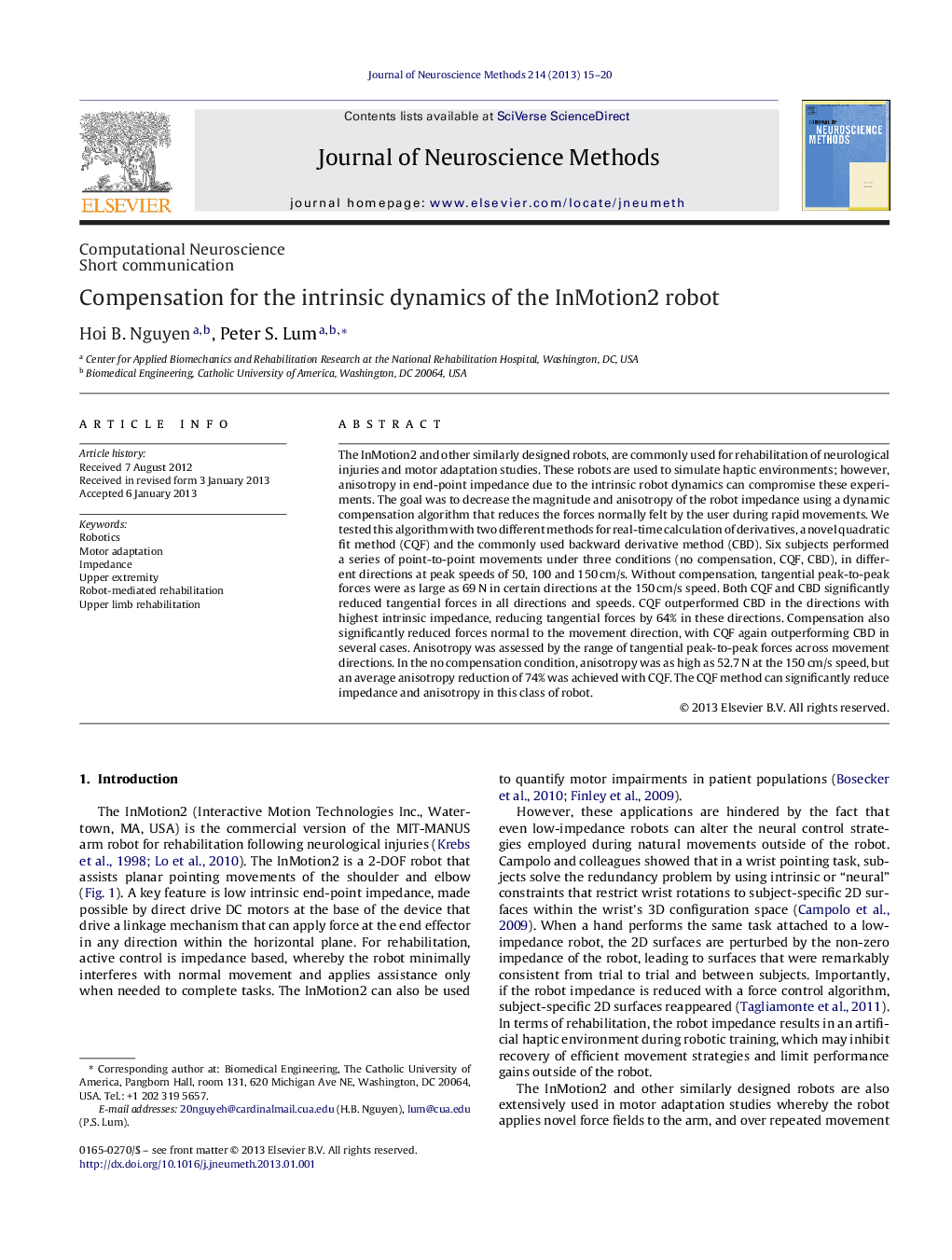| Article ID | Journal | Published Year | Pages | File Type |
|---|---|---|---|---|
| 6269345 | Journal of Neuroscience Methods | 2013 | 6 Pages |
Abstract
The InMotion2 and other similarly designed robots, are commonly used for rehabilitation of neurological injuries and motor adaptation studies. These robots are used to simulate haptic environments; however, anisotropy in end-point impedance due to the intrinsic robot dynamics can compromise these experiments. The goal was to decrease the magnitude and anisotropy of the robot impedance using a dynamic compensation algorithm that reduces the forces normally felt by the user during rapid movements. We tested this algorithm with two different methods for real-time calculation of derivatives, a novel quadratic fit method (CQF) and the commonly used backward derivative method (CBD). Six subjects performed a series of point-to-point movements under three conditions (no compensation, CQF, CBD), in different directions at peak speeds of 50, 100 and 150Â cm/s. Without compensation, tangential peak-to-peak forces were as large as 69Â N in certain directions at the 150Â cm/s speed. Both CQF and CBD significantly reduced tangential forces in all directions and speeds. CQF outperformed CBD in the directions with highest intrinsic impedance, reducing tangential forces by 64% in these directions. Compensation also significantly reduced forces normal to the movement direction, with CQF again outperforming CBD in several cases. Anisotropy was assessed by the range of tangential peak-to-peak forces across movement directions. In the no compensation condition, anisotropy was as high as 52.7Â N at the 150Â cm/s speed, but an average anisotropy reduction of 74% was achieved with CQF. The CQF method can significantly reduce impedance and anisotropy in this class of robot.
Related Topics
Life Sciences
Neuroscience
Neuroscience (General)
Authors
Hoi B. Nguyen, Peter S. Lum,
